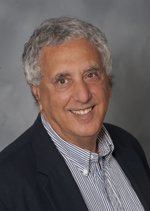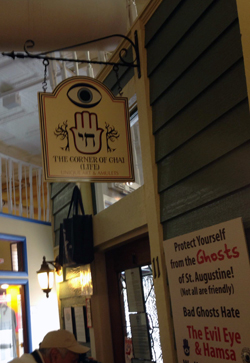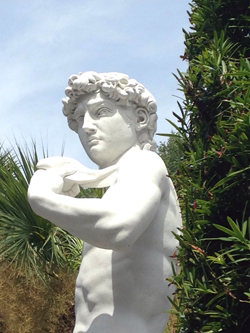
Story by Donald H. Harrison; photos by Shor Masori

ST AUGUSTINE, Florida — In this, the oldest European city of North America settled by Spaniards in 1565, I wondered whether any of the earliest soldiers might have been conversos — that is, former Jews who were forced to convert to Catholicism in order to remain subjects of the Spanish kings.
Mike Evans, a National Parks Service ranger at the Castillo de San Marcos National Monument, said he was not aware of any such documentation “but I wouldn’t be surprised if there were.” Nor, he said, did he know of any documented instances such as there were in Mexico of Inquisitors prosecuting Converso families for “Judaizing” behavior. At what essentially was the northern outpost of the Spanish empire on the East Coast of the New World, the Spaniards here were “too busy trying to stay alive,” warding off starvation, to give too much attention to ecclesiastical matters, Evans said.

That didn’t mean, however, that St Augustine doesn’t have its share of Jewish stories and points of interest. At stops along the Old Town Trolley tour route, I found at least two: At 162 St. George Street, there was a store called “The Corner of Chai” that was selling hamsas, chais, and other charms and amulets we associate with Judaism, and at 19 San Marco Ave the Ripley’s “Believe It Or Not Odditorium” features a large replica of Michelangelo’s statue of David.
The proprietor of “The Corner of Chai” described himself as an archaeologist, which he said he had studied at the University of Haifa and had practiced in Israel. He said that the five fingers of the hand symbolizing protection recurs as a theme in many cultures around the world, although perhaps we are most familiar with the hamsas from Israel and the Arab world.
Just as there were variants stemming from ancient times of symbols for protection, so too were there great varieties of symbols connoting warfare — seen particularly in the ramming devices of ancient ships. Many of these ramming devices, protruding from the bow of rowed and sailed ships were decorated with eyes on either side, which sometimes gave the ships a fearsome aspect, and at other times, humorous ones.
In the small shop, visitors may purchase shirts with such sayings as “Chai from St. Augustine” in addition to charms and amulets, which each tell a story about human beliefs and behavior in ancient times.

As we approached Ripley’s “Believe It Or Not” exhibit, our Old Town Trolley guide pointed out a large head that could be seen towering above tall shrubbery. He explained that the statue shielded from full public view is a replica of Michelangelo’s famous statue of King David. The reason for the surrounding vegetation, he said, is because the oversized David is totally nude, and after its arrival in St. Augustine was a target for college-type pranks. It’s been noted by others, but it’s worth repeating, that somehow David, in statue form, is uncircumcised — so in that respect, at least, David is not 100 percent true to life.
Inside the museum, there are other items of Jewish interest, including separate portraits of Marilyn Monroe and Elvis Presley in unusual media. Monroe converted to Judaism, and by halacha, Presley was Jewish because his mother and three generations of women preceding her were Jewish. According to the Corner of Chai guy, in his later years Presley used to wear a chai around his neck, while saying that he had grown up as a Christian. “Covering all his bases” was the way Chai guy described the popular rock and roll singer’s attitude toward religion.
Amnon and Betsy Markusfeld, our Oviedo, Florida, hosts, later shared with my grandson Shor and me another Ripley connection to our Jewish experiences. In the 1950s, “Ripley’s Believe It or Not,” which regularly published a cartoon feature in newspapers, reported that “Mrs. Mary Isenberg of New York City aged 95 saw both her son and daughter celebrate their golden wedding anniversaries.”
Mrs. Isenberg, Betsy told me proudly, “was my grandmother” on her mother’s side.
*
Harrison is editor of San Diego Jewish World. You may comment to him at donald.harrison@sdjewishworld.com, or post your comment on this website, provided that the
comment is civil and that you identify yourself by full name and by your city and state of residence.